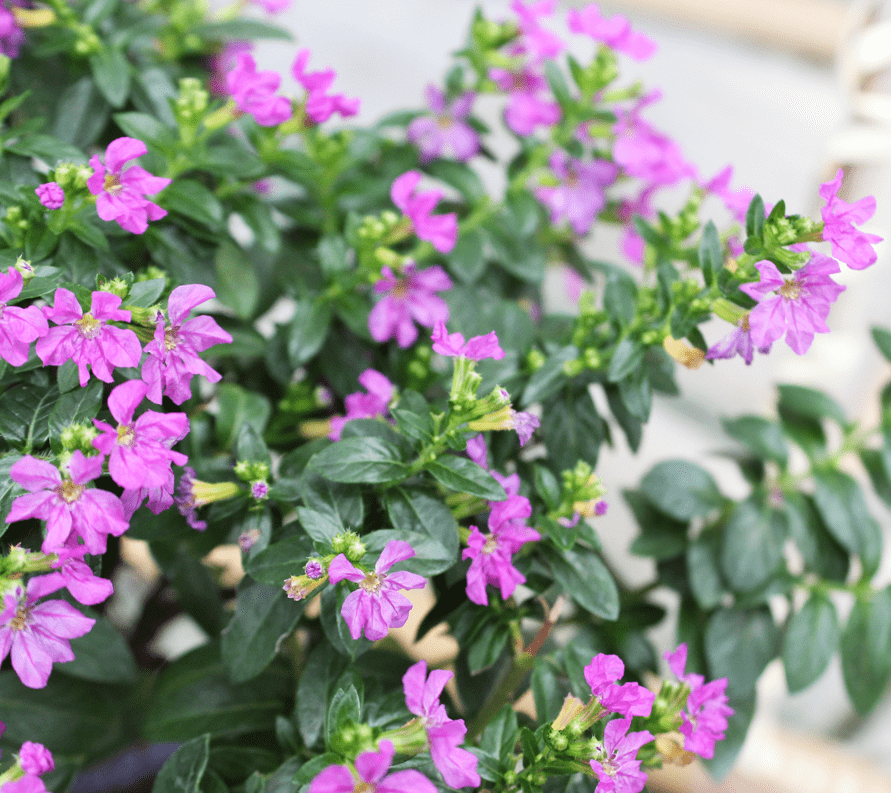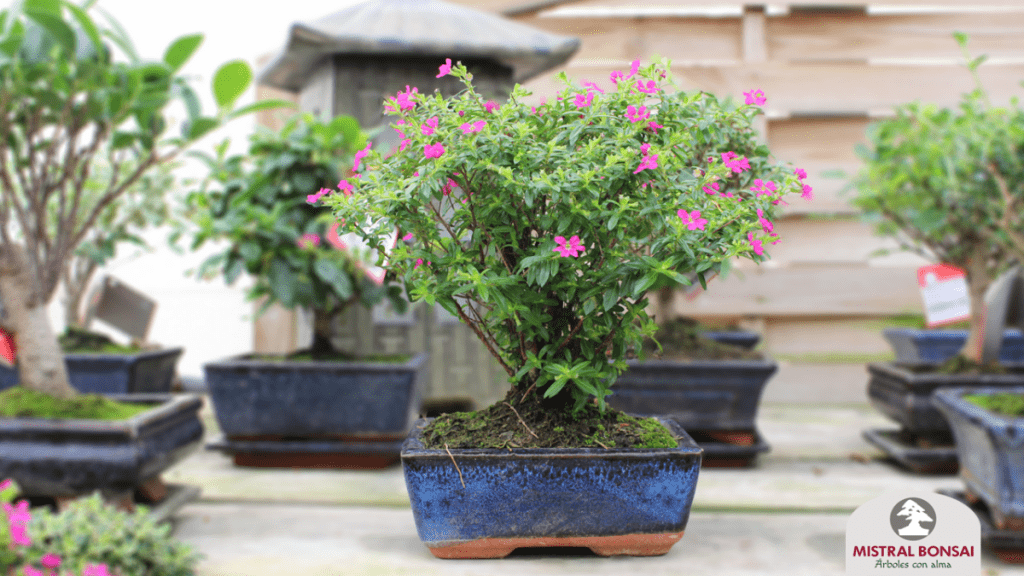Step by Step Cuphea’s Maintenance Guide

One of the genus you like the most is without a doubt the Cuphea, also known as Cufea. This shrub from the warm regions of America is distinguished by its abundant purple flowers, a very characteristic woody trunk and its small, intense green leaves. In this article, we show you step by step how to take care of it, so that you can enjoy all its splendor.
Where to place the Cuphea?
The Cuphea is an evergreen shrub of tropical and subtropical origin. This means that it does not tolerate peaks of heat, cold or continuous frosts. He lives very well inside the house because the temperatures are stable. Remember to place it near a large window where it receives the most sunlight.
The watering of a Cuphea. Key point to take care of.
A Cuphea bonsai, like other indoor bonsai trees, must be watered properly, using the proper technique. This variety usually needs more water than other indoor bonsai trees. The advantage of Cuphea is that it will show us very clearly when it needs water, because its leaves will stain immediately. As soon as we water it, it regains its vigor.
When should we prune and pinch the Cuphea?
Pruning should be done in early spring so that the sores can heal properly with the start of the sap flow.
Pinching consists in cutting the buds which have become too large and which come out of the silhouette of the bonsai. It is recommended to prune long shoots leaving two pairs of leaves. The Cuphea can be pinched at any time of the year.
Cuphea is a variety recommended for beginners in the bonsai world for its ease of care and maintenance.
The styles of bonsai that we can apply to Cuphea.
A Cuphea bonsai, can be designed in the 5 basic styles:
- Chokkan = formal
- Moyogi = informal
- Sakkan = Tilted
- Kengai = waterfall
- Han Kengai = Semi-waterfall
We can also design our Cuphea bonsai in forest, double trunk, multi-trunk or triple trunk style. As you can see, it is a very versatile species in terms of design as a bonsai.
How to fertilise a Cuphea bonsai?
As with other indoor bonsai trees, we will put fertiliser during two well defined periods.
The first period goes from the beginning of spring to the peak of summer heat (when the temperature exceeds 35 ° C). We will use a growth fertiliser (rich in nitrogen). This nitrogen (N) will be superior to phosphorus (P) and potassium (K). It can be chemical or organic, solid or liquid.
During the hottest period of summer (over 35 ° C), it is not necessary to put any fertiliser, because the tree is in lethargy and it would not assimilate it.
The second period ranges from lower temperatures in summer to late fall. We must use a fertilizer that contains more phosphorus (P) and potassium (K) than nitrogen (N). It can be chemical or organic, solid or liquid.
In winter, we will not fertilise.
Repotting the Cuphea
We have to repot it every 2 years, because the growth of these roots is fast. The best time to do this is in early spring. This bonsai tree needs all the irrigation water to drip, so you can use Terrabonsai as a substrate or if you prefer Akadama with gravel.
When can we put the wire?
The Cuphea is still growing and green. Therefore, you can wire it at any time of the year. Remember that in spring the branches will be more flexible. Some people say that because it is a bush, you cannot wire it, but if a branch is not where you need it, with a fine wire adapted to the resistance of the branch, you can wire it and put it in its place.
Do not miss our blog on how to choose the right thread for each branch by clicking here.
When do flowers come out and how to care for them
Without a doubt, the flowers of the Cuphea are what most distinguish this species. They come out in late spring. To make them last longer, be careful not to get them wet when you water. Do not use foliar fertiliser, and make sure they get lots of light. You will see how your flowers last longer and their colour is brighter.
As you can see, if you follow these simple suggestions, you can enjoy your Cuphea bonsai at any time.
See you next time.
You may also be interested in…
About the Author
Mistral Bonsai
In Mistral Bonsai we are a communication team, technicians and masters committed from the first day to disseminating the wonderful art of bonsai. A world that offers many things to share. We believe that a bonsai is a tree with a soul, unique and unrepeatable. Another of our most essential pillars is, how could it be otherwise, our close commitment to the preservation of the environment and nature.
Categories
Bonsai cultivation and care (54)
Bonsai gift (2)
Bonsai pests and diseases (6)
Bonsai repotting (3)
bonsai substrates (2)
bonsai tools (1)
Bonsai work (10)
Ceramic pots (3)
Chinese culture (2)
Chinese culture (1)
Corporative Mistral Bonsai (8)
Cuidados del bonsái (22)
Cultivo del bonsái (20)
Dead wood (2)

